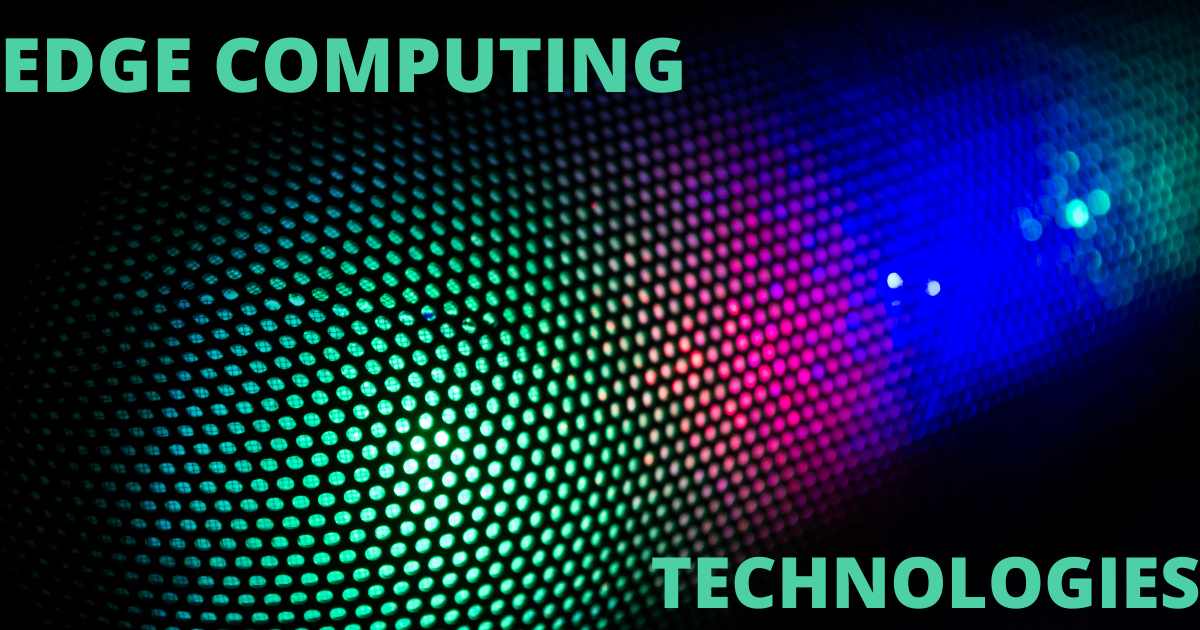With the rapid development of mobile internet and IoT apps, the classic centralized cloud computing is encountering severe problems. For example, high latency, non-adaptive machine type of communication, and low Spectral Efficiency (SE). Aimed at solving these challenges, new tech is driving a trend that is shifting the function of centralized cloud computing to edge devices. Several edge computing technologies emerging from different backgrounds to reduce these issues have been emerging. Let’s talk about Edge computing technologies in detail.
What is Edge Computing Technologies?
There are many reasons behind organizations beginning to employ edge computing technologies into their network infrastructure. Such as: real-time AI data analysis and enhanced application performance, as well as much lower operating costs and scheduled downtime.
In this article, we’ll look at a few edge computing technologies. For instance, mobile edge computing, fog computing, cloudlets, micro-data centers, and a new concept known as the Cloud of Things.
Multi-Access Edge Computing
Multi-access Edge Computing is also known as Mobile Edge Computing (MEC). It is a network architecture that enables the placement of computational and storage resources within the radio access network (RAN). The MEC helps in improving network efficiency as well as the delivery of content to end-users. In order to get this done, the device adapts to the load on the radio link to improve network efficiency and reduce the need for long-distance backhauling.
Network demands are increasing rapidly since more IoT and 5G technologies and devices are coming up. The mobile edge computing allows operators to deal with this excess traffic and resource demands intelligently. It also helps in laying the foundations for future intelligent and next-gen networks. Mobile edge computing also provides better location, augmented reality, and Internet of Things services support.
Fog Computing
Fog computing, fog networking, or just “fogging”, is a term that describes a decentralized computing infrastructure. It is one of the edge computing technologies. Fog computing extends cloud computing (data center) to the edge of a network. Subsequently, is also places data, computes, stores, and applies in the most logical and efficient place.
The goal behind fog computing is to extend cloud computing as well as services to the edge of a network. By doing this it attempts to reduce the data transported to the cloud for processing, analysis, and/or storage.
Cloudlets
Cloudlets are mobile, small scale cloud data centers positioned at the edge of a network. They are a crucial part of edge computing technologies. Cloudlets represent the second tier of the three-tier hierarchy which is IoT or edge device – Cloudlet and then Cloud. Their motive is to improve resource-intensive and interactive mobile applications. They aim to do this by providing better capable computing resources with lower latency to mobile devices within close geographical nearness. This can then help to diminish the latency delays usually associated with WAN cloud computing.
Cloudlets will be providing the required support for 5G networks upon their arrival due to the rising demand that will come along with them. They would also need to be decentralized as well as widely spread in order to offer the greatest level of network coverage possible. This will also help in gathering resources from nearby mobile computers.
MicroData Centers
Growth of the Internet of Things is continuing to inspire the development of new smart devices and IoT sensors. The Microdata center solution sector could be worth 30 billion dollars over the next few years. An estimate suggests that micro data centers will be most beneficial to Small & Medium Enterprises that don’t have their own data centers. This is because larger corporations will tend to have more resources and thus, won’t need such solutions.
What is Micro Data Center?
Microdata centers are smaller, reach-level systems that provide all the necessary components of a classical data center. In few edge computing applications, the microdata centers are much more suited than classic data centers as they can particularly be much smaller in size. Hence, it is a growing technology in edge computing.
Due to the size, the microdata center can be used inside as well as outside of uneven conditions. This makes them a great solution for edge computing. This is because they can be deployed locally where the data source is and can be custom built to suit the needs of those looking to apply them.
Cloud of Things
Cloud of Things (CoT) is still under development. But, it shows a lot of promise as a part of edge computing technology. In a CoT, whole processing power is taken from the extreme edge to the end-user.
The Cloud of Things is similar to fog computing. In a CoT, all IoT devices add up to form a virtual cloud infrastructure. Here, the computing is done by the IoT devices themselves, which have pooled resources.
There are new CoT concepts such as Nokia’s Sensing-as-a-Service. These use a pool of existing edge sensing infrastructure acting as cloud agents. They are located very close to the edge. These IoT sensors can offer real-time processing and analysis of environmental data, without requiring a “Cloud”.

All you need to know about IoT
| Introduction to IoT | Career Options after IoT |
| IoT in Business Growth | How IoT works? |
| Future of IoT | Benefits of IoT |
| Disadvantages of IoT | Salary After IoT Course |
Learn IoT
| Top 7 IoT University/ Colleges in India | Top 7 Training Institutes of IoT |
| Top 7 Online IoT Training Programs | Top 7 Certification Courses of IoT |
Learn IoT with WAC
Other Skills in Demand
| Artificial Intelligence | Data Science |
| Digital Marketing | Business Analytics |
| Big Data | Internet of Things |
| Python Programming | Robotics & Embedded System |
| Android App Development | Machine Learning |

